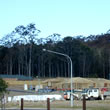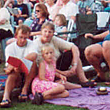| search | feedback | |
| thriving organisations |
|
| governance | |
| planning | |
| evaluation | |
| quality improvement |
|
| evidence based practice |
|
| risk management | |
| writing
policy & organisational manuals |
|
| questionnaires | |
| data analysis | |
| social capital | |
| facilitation | |
| training workshops | |
| ideas & articles | |
| about us | |
| disclaimer | copyright | |
Management |
![]() 1.
Project | 2.
Questions | 3.
Findings | 4.
Pictures
1.
Project | 2.
Questions | 3.
Findings | 4.
Pictures
5. Report & survey forms
Warnervale Districty Community Survey
3. Findings
A. Community Development Works
1. Participation in community activities and events builds community connectedness.
Eleven specific events and activities were analysed in detail:
The Warnervale Family and Community Centre.
Community BBQ.
Spring Fair.
Markets at the Family and Community Centre.
Welcome Packs.
Public Meetings.
Signing Petitions.
Children/Parenting Groups.
Sporting, Recreation and Hobby Groups.
Religious Groups.
Services and Other Social Clubs.
Participation in any of these activities was associated with significant positive changes from 1998 to 2001 in the community connectedness of residents. Overall those who participated became more connected than those who did not participate.
The more events and activities people participated in 2000 and 2001 the bigger the positive changes to their community connections.
B. There are Windows of Opportunity for Effective Community Development
2. There is a window of opportunity when people move to a new community.
People who are less involved in their local community before they
come to the
Warnervale District are likely to become more involved in
their new community; when moving to a new community
and losing many of their past community connections they are
motivated to reach out and get involved in things they would
not normally have got involved with.
The
extent of the impact of community development activities is much greater
for
people who have recently moved into the community than
for people who have been in the community a long time.
Issues and implications: In a growing community it is very important to have strategies to make connections with people moving into the community; strategies will be more effective in bringing about change at this time than later on. Effective strategies include the welcome packs and community B-B-Qs.
C.
Each Community Development Activity has a Unique Mix of Impacts on
Community Connectedness; Community Development is not a
Series of Generic Activities.
Understanding this Allows Better Strategic Planning
of Community Development.
Strategic planning is discussed in detail in Section L. Strategic Issues.
3. The specific impacts of community development activities on community connectedness vary from one community event to another.
For example, people who participate in the Warnervale Family and Community Centre are likely to grow in their feelings that they have the ability to change things they care about whereas people who participate in the Spring Fair are more likely to be able to get help from friends when they need to but show no significant difference in their feelings that they have the ability to change things they care about.
4. Local community events have a bigger impact on the local community than events outside the local community.
For
example, on average, there was a bigger positive effect on the onnectedness
of the local community, from groups and activities
that were within the arnervale
district, than from groups and activities
outside the Wyong Shire.
5. Some community events and activities impact on many aspects of community connectedness, other only a few.
For example participation in the Warnervale Family and Community Centre impacts on many aspects of community connectedness and participation in the Markets impacts on only a few.
Participation in nine of eleven activities
and events analysed in detail increases
people's ability to be comfortable
challenging neighbours if they feel
concern about their neighbours children's safety
or welfare.
Participation in half of the eleven activities and events analysed increased people's ability to get help from friends and neighbours.
Only one activity impacted on people's ability to get help from family when they need to (the Community BBQ for current residents).
See Attachment 3 Community development - changing community connectedness for full details of which community development activities and events affect which aspects of community connectedness.
6.
Universal strategies such as the Welcome Packs can effectively
reach
marginalised people.
Welcome Packs are provided to new residents by volunteers. The Welcome Packs include information about services and a gift (a pot plant in recent times).
The Welcome Packs are one community
activity that people did
not choose to
participate in. Someone
in the community chose
to visit
new
residents when
they first arrived to make them
feel welcome and provide
local information.
The Welcome Packs make a significant difference for people who are coming from Sydney.
Marginalised people who received the welcome packs have better Connections with neighbours than those who did not receive welcome packs.
Issues and Implications: Community development strategies have unique specific impacts. The community development strategies used in a particular community ideally should connect with the nature of the community and the needs of the community. This implies a high level of understanding of the community, the needs of the people in it and the effects of community development strategies.
D.
Community Development Strategies help
make the Community a Place
where People
Look Out for Children's
Safety and Welfare.
7. The stronger the neighbourhood networks the more likely it is that people will be looking out for the safety of children. Community development strategies build these networks.
8. Some specific strategies have had big impacts on people's willingness to challenge neighbours if they feel concern about their children's safety or welfare. For example: The Warnervale Family and Community Centre, the welcome packs and the community BBQs.
Issues
and Implications: A further
issue is how this
willingness
translates
into actual children's
safety and
welfare.
Further study
is required
to link the
findings
above with data on crime,
reports of
children
at risk
to the Department
of Community
Services,
etc.
E.
The Community
includes
Marginalised
People,
Well Connected
and Resourced
People and
People with
Other
Social
Profiles.
There are
Opportunities
for Building Connections
between these
People.
9.
People in the
community can
be grouped
into six
different
social
profiles. These
six groups
of people
have
dramatically
different
life
experiences
and experiences
of the
community.
The six
social
profiles
are:
% Profile
16 A Well
off and
involved.
19 B Well
off but
not involved.
24 C Connected
but stressed
and not
much involved.
15 D Needs
to be involved.
18 E Some
connections
and marginalised.
7 F Isolated
and marginalised.
For example
three
quarters of group
A. Well
Off agreed
with
'I am
comfortable in
challenging
neighbours
if I
feel
concern
about
their
children's
safety
of
welfare'
whereas
one third
of
group
D. Needs
to be
involved agree
with
the statement.
Two thirds of group A. Well Off agreed with 'I have the ability to change the things I care about', whereas one quarter of group F. Marginalised agree with the statement.
10. The six social profiles are not defined by age, gender, household type or other demographic characteristics. There is a challenge for community workers to describe the community in new ways that reflects community connectedness rather than demographics.
11. There are some differences between those with and without 'resources' that do reflect demographics and household types, for example:
Approximately
70% of
households with
children often
feel rushed,
pressured and
too
busy compared
with approximately
34% people
over 50
years of
age.
More than 40% of households with children have been really stressed out in recent weeks compared with approximately 20% of people over 50 years of age.
Older people living alone are most likely to meet friends and acquaintances when going shopping (59%) compared with other household types.
Issues and implications: A big issue is how to make connections between these different groups in a way that benefits all the people concerned. For example well connected and resourced people could be mentoring less well resourced isolated people.
A second big issue is for community development workers to think in terms of the social connectedness of people in the community rather than the usual demographic profiles. While this is difficult because it can be hard, for example, to get a handle on who the marginalised people are, it is useful because it directly addresses the issues of community connectedness in the way the community is described.
F. About two thirds of the community do not participate in local community events. About one third do. There are many untapped resources within the community.
11. Overall two thirds of the community do not participate in local community events. Overall the level or participation in community events can be summarised as:
%
Group
69
A People
who have
not participated
in any
local
events
(and
half
have
not
participated
in any
community
organisations).
15
B People
who
have
participated
in
1 to
2 local
events
(three
quarters
of
whom
have also
participated
in
community
organisations).
8
C People
who
have
participated
in
3 to
10 local
events
(nearly
all
of
whom
have
also
participated
in community
organisations).
8
D Organisers
of local
events
(most
of whom
also
participated
in community
organisations)
Issues and implications: Participation in community events in a new community builds community connectedness and there are numerous benefits to the individuals involved and to the wider community. Most people in the community are not participating directly in local community events. This is an enormous lost opportunity. A big challenge is to develop strategies that include larger numbers of people living in the community.
G.
The
Community
includes
Long
Term
Residents,
People
coming
from
elsewhere
in
the Shire
(or
Gosford
City),
People
coming
from
Sydney
and
those
from
elsewhere. These
Groups
experience
the
Community
differently.
Community
Development Strategies
Impact
on
these
groups
differently.
So
there
is
a
Challenge
to
think Strategically
about
Community
Development
Activities.
13.
The
impact
of
participation
in
community
events
and
activities
varies
considerably
with
where
people
were
living
in
1998. Overall
those
people
coming
from
Sydney
show
the
most
change
as a
result
of
participating
in
community
events
and
those
who
were
already
living
in Warnervale
in
1998
show
the
least
change.
For
example:
People
who
were
living
in
Warnervale
in 1998
and
participate
in
children's
and parents
groups
in
2000
and
2001
have no
positive
changes
in
their
community connections
from
1998
to
2001
compared
with people
who
did
not
participate
in
children's
and
parents
groups.
People
who
were living
in
Sydney
in
1998
and participated
in
the
children's
and
parents
groups in
2000
and
2001
have
numerous significant
changes
from
1998
to
2001
(compared with
people
who
did
not participate).
14. People experience the connectedness of the Warnervale community very differently depending on where they were living in 1998. For example for people at their current address in 1998 one third agreed that in 2001 it was safe to walk around the area at night. For people living in Western Sydney in 1998 over half agreed that in 2001 it is safe to walk around the area at night.
Issues and implications: While community development strategies are more effective for new people coming into the community it is also important to note the value of maintenance of connections in the community. There is value in people attending activities which help maintain the community connectedness. A further useful study would connect the data above about perceived levels of safety with actual data on crime and other aspects of safety.
H. Commuting is a Significant and Important, but not Fully Understood, Issue.
15. Commuting is a significant issue in the community, there are negative effects for some people and positive effects for others; there is a gap between the survey data on commuting and the anecdotal stories from interviews and focus groups. For example anecdotal evidence from community workers suggest that commuting is universally not good. The survey data shows that:
People
who
are
well
connected
and
well
resourced show
almost
no
differences
between
commuters
and
non
commuters.
People
who
are
well
off
but
not involved are
more
likely
to
experience
stress
with
friends
and
neighbours
when
they
are
commuting than
if
they
are
working
but
not
commuting
People who are Isolated and marginalised are not likely to be working or commuting.
Further work is required to understand the impacts of commuting in the community.
I. The Warnervale District's Community Connectedness is Different from Other Communities. Working on Building the Community will require the Uniqueness to be Understood.
16.
When
the
Warnervale
district
community
profile is
compared
with
the
community
profile
of
the
following
five
other communities
in
NSW:
West
Wyalong
(country
town
in
NSW).
Deniliquin
(country
town
in
NSW).
Narellan
(new
estate
near
Campbelltown).
Greenacre
(Sydney
Inner
West).
Ultimo/Pyrmont
(Sydney
Inner
City).
Warnervale
is
overall
most
similar
to
Narellan (another
new
housing
estate)
but
there
are
also
come
differences,
for
example compared
to
Narellan
Warnervale
people
are
less
likely
to
run
into friends
and
acquaintances
when
they
go
shopping.
17.
When
the
Warnervale
district
community
profile is
compared
with
the
social profile
of
the
Australian
community in
terms of
trust,
reciprocity
and
confidence
in
institutions
the
Warnervale
district
community
has wider
variation.
On
average
is
just
below
the
Australian
average
on
these characteristics.




